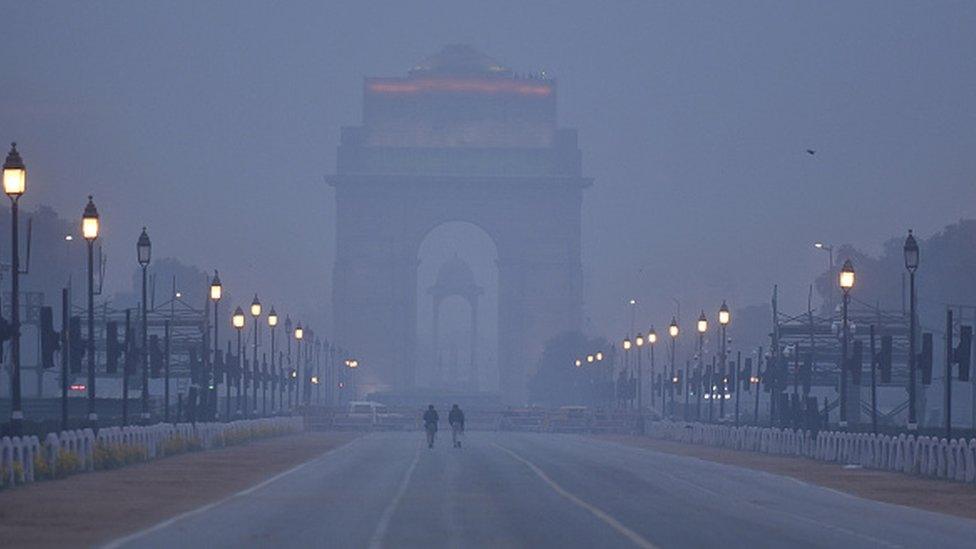Delhi air pollution: Study links poor air quality with obesity and asthma among children
- Published

Experts say prolonged exposure to unclean air leads to severe illnesses in children
Exposure to high levels of air pollution can make children obese and put them at greater risk of asthma, a new study has found.
The study said obese children had a 79% greater chance of having asthma.
This association was highest seen in Delhi, which experiences hazardous air quality every year.
And while there could be many causes for obesity in children, "ambient air pollution could be an important contributing factor", it said.
The study by the Lung Care Foundation and Pulmocare Research and Education is the first in India to establish a link between overweight children, asthma and air pollution.
Experts have long warned that prolonged exposure to unclean air could lead to respiratory illnesses, especially among children. They say urgent action is required to protect them.
Lung Care Foundation looked at 3,157 children in 12 schools - selected at random - from Delhi, and southern Indian cities of Kottayam and Mysuru - both of which have relatively cleaner air.
It found that 39.8% children from Delhi were overweight as compared to 16.4% in Kottayam and Mysuru.
This correlates "very well" with the reported particulate matter (PM2.5) - dangerous tiny pollutants in the air - levels found in these cities, the study said.
Delhi is among the most polluted cities in the world.
Every year, air pollution there climbs to levels around nine times more than what the World Health Organization (WHO) considers safe, as a thick blanket of smog - fed by agriculture fires and festive fireworks - engulfs the city.
Dr Sundeep Salvi, director of Pulmocare Research and Education (PURE) Foundation in the western city of Pune, said the research confirms that breathing such unclean air can make children fat.
He said that pollutants in the air contain certain chemicals, known as obesogens, that can alter a person's metabolism.
"When a person breathes polluted air, these obesogens enter the body. This messes up the endocrine system and leads to obesity," Dr Salvi told the BBC.

Delhi experiences dense smog every year during the winter season
Dr Salvi said that children are especially vulnerable because their intake of air is higher as they are more active than adults. "This makes them more susceptible to inhaling these obesogenic pollutants."
The study also found that school children in Delhi have "significantly higher prevalence" of asthma and allergy symptoms - such as itchy watery eyes, cough and rash - as compared to those in Kottayam and Mysuru.
At least 29.3% children from Delhi were found to have airflow obstruction or asthma during a breathing test as compared to 22.6% children in Kottayam and Mysuru.
This difference was despite the fact that the two main factors associated with childhood asthma - family history of the disease and a smoker in the family - were more prevalent in the southern cities, researchers said.
Dr Arvind Kumar, the founder trustee of Lung Care Foundation, called the study "eye-opener".
"It has shown an unacceptably high prevalence of respiratory and allergic symptoms, spirometry-defined asthma, and obesity in Delhi children," he said.
And air pollution is "the probable link with all three".
"It is high time that the air pollution issue in Delhi and other cities is settled in a systematic manner to save the future of our children," he said.

Watch how children in India's capital Delhi are affected by air pollution
